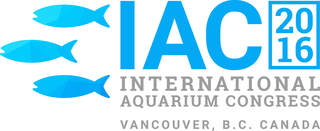Fish Husbandry Abstracts
|
Collection, Husbandry and Transport of Naucrates Ductor, Sphyraena Viridensis, Silurus Glanis and Epinephelus Marginatus
João Correia, Flying Sharks Watch Video (Login required) Full Abstract
This presentation focuses on the technical details adopted to collect Naucrates ductor using hook & line off the central Azorean archipelago, Sphyraena barracuda using barrier nets in Horta island, Silurus glanis with barrier nets in the Ebro river and Epinephelus marginatus using traps in Horta Island. Details are additionally provided on husbandry techniques adopted for each species, with emphasis on prophylactic and post-traumatic treatments that have proved very successful over the years, such as the use of Betadine baths. Results on both simulated transports and de-facto transports are also presented, including essays conducted with the use of pH buffering and ammonia quenching agents, thus ensuring water quality remained optimal throughout transport. These assays, and subsequent transports, revealed that a formula of 25/100/100 grams of Amquel/sodium bicarbonate/sodium carbonate (respectively) yield ideal results. Additional techniques adopted for the very particular transport of a large 2.6 meter long teleost (S. glanis) by both road and air are also presented, such as how to balance the need for degassing, while keeping a fully sealed environment, through the use of one-way valves. Further notes on the occurrence of species specific parasites on E. marginatus are also given. |
A Synopsis of the Second International Seadragon Husbandry Symposium
Leslee Matsushige, Birch Aquarium at Scripps Institution of Oceanography Watch Video (Login required) Full Abstract
The Second International Seadragon Husbandry Symposium was hosted by the Birch Aquarium at Scripps Institution of Oceanography in June of 2016. This Symposium joined aquarists, biologists, nutritionists, and veterinarians. Featured presentations and discussions were on husbandry and research on acquisition, display, life support, water quality, nutrition, reproduction, health and future management issues. This valuable symposium allowed networking and information exchange among top worldwide seadragon experts in research, health and husbandry. Seadragons are very popular in public aquariums. Currently there are strict limits placed on taking these fishes from their endemic habitat in Australia. Will we be able to continue exhibiting these spectacular fishes in aquariums? The information learned from the gathering of the seadragon experts will hopefully answer this question. A summary of the highlights and hot topics of the seadragon symposium will be presented. It is the hope that public aquariums worldwide will gain interest in progressively working together in collaboration on seadragon husbandry, propagation and research. |
Grey Nurse Shark (Charchaias Taurus) Captive Management, a Case Study from Eastern Australian Aquaria
Rob Hicks, Manly SEA LIFE Sanctuary Watch Video (Login required) Full Abstract
Grey nurse sharks have been held in captivity in Australia for over 50 years. They are currently classified as critically endangered in their east Australian population, which has resulted in protections for wild populations including a moratorium on the collection of animals for the public aquarium industry. The aquarium industry still plays a vital role in educating the public about the plight of this species. The total captive population across 4 institutions capable of holding grey nurse sharks in eastern Australia has gone from a high of 28 in the late 90s to the current population of 11. Given the aging population (mean adult age = 29 years), the lack of breeding and wild collection, there will be few animals in captivity in the next decade. While there has been some breeding success in east coast aquaria (10 pups over the last 25 years) there have been no pups for 7 years and no captive born pups have gone on to produce viable offspring. Efforts have been made to improve breeding success including paternity testing of all available offspring to establish which males were responsible for fertilisation and if any patterns could be established for the high incidence of still births and scoliotic offspring. Tracking food intake has proven to be an effective mechanism for predicting when females are entering the reproductive phase of their biennial reproductive cycle. Population management has proven difficult, with the movement of adult animals between sites both expensive and logistically awkward, meaning the ideal breeding combinations have not always been achievable. There have been some positive signs from the Australian government indicating some limited collection may be permitted in the future however this is still some time off. |
|
International Shark Rescue,
Rehoming Adult Lemon Sharks (Negaprion Brevirostris) James Wright, National Marine Aquarium Watch Video (Login required) Full Abstract
In 2015, the National Marine Aquarium in Plymouth, UK, became aware of the need of a Zoo in The Netherlands to relocate their lemon sharks (Negaprion brevirostris). This zoo was very popular but unfortunately located in the centre of a city with no room for expansion, a plan was made to relocate the zoo to the outskirts. Part of this plan however would result in the permanent removal of the aquarium exhibit section of the collection. This meant new homes had to be sought for the adult lemon sharks that had resided at the zoo since 1984. Arriving at a length of around 60 cm (24”), they now are between 2.5 metres (8’3”) and 2.8 metres (9’2”), around 170-180kgs (375-397lbs) in weight. So a plan was made to move them through four countries to their new home. The next challenge was retraining these potentially institutionalised sharks, which had only been scatter fed in a species specific exhibit, to live in a mixed elasmobranch and teleost display. We then had the challenge of moving them up three floors safely to the final exhibit from our quarantine facility, all without the use of our elevator due to their size. Here they lived in a specially constructed pen until final integration to the exhibit in 2016. |

